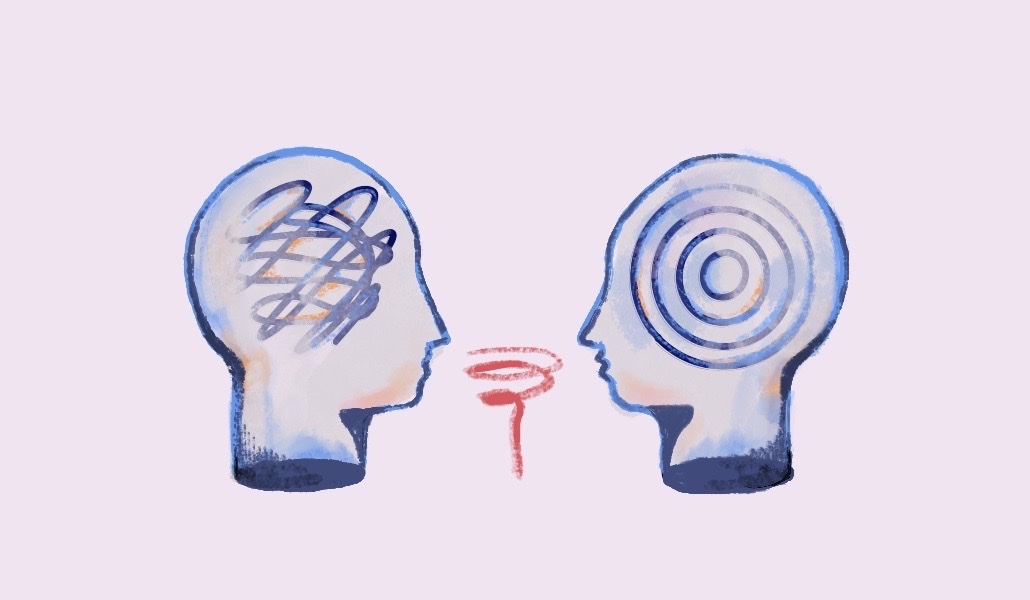The push and pull between CEO and CHRO, and how it has to evolve

Any working relationship can get rocky at times, and the dynamic between CEOs and HR chiefs is no exception. But an organization’s success now – more than ever – rides on the strength of its people strategy. And some CHROs say they need their CEOs to get on board faster with how the role of HR has evolved, so they can expedite the necessary workforce changes.
It seems work needs to be done on both sides. Only half of CHROs questioned in Gartner’s Global 2022 Q4 survey, “strongly agree” that they trust their CEO and that their CEO trusts them back.
“It’s the push and pull of the relationship,” said Paul Wolfe, a human-first leadership advocate, former HR exec, and author of Human Beings First. “Like any good relationship, there is going to be stuff that needs compromise. But trust and respect are the two things you need for the foundation of any good relationship.”
The relationship between CEOs and CHROs was once very straightforward. The HR department handled payroll, benefits and other administrative tasks, and the CEO set the overall strategic direction for the organization. But the effects the coronavirus pandemic had on the workplace and workforces, forced HR execs out of the administrative shadows and into a position where their mettle is tested on a daily basis. From managing workforces through the mental health crisis triggered by the pandemic; sustaining workplace culture while the world worked remotely; spearheading flexible working policies, to managing mass layoffs and being responsible for improving the overall employee experience, HR execs have had their work cut out.
“It’s a shift that I think many HR professionals have wanted for a long time,” said Melanie Naranjo, vp of people at compliance training company Ethena. “HR is finally being seen as more than an administrative role for payroll and benefits.”
But when a work relationship changes after being status quo for many years, it can be a tough adjustment, especially if that means trusting someone with more responsibilities. To meet challenges like attrition, CHROs need CEO support in areas like job advancement opportunities, designing supportive workplace cultures and creating new workplace policies. But it’s not always so easy, especially if a CEO is stuck in the past and believes that workplace culture doesn’t help the bottom line.
While company culture might not be as measurable as other business indicators, experts stress it can no longer be underestimated as nice-to-have, but an engine that drives productivity and retention rates. But pre-pandemic efforts aren’t sufficient. For example, CHROs are helping CEOs understand that the wellness benefit of a gym membership is no longer enough to safeguard the mental health and financial wellness of workforces in a post-pandemic workplace.
“They aren’t one-year goals,” said Linda Ho, chief people officer at global sales enablement platform Seismic. “It takes a long time to drive systemic change. I think as a society we’re not as patient for those types of changes, but once you get there, they are lasting changes and fundamentally alter the culture of your company.”
Trust comes from transparency, honest feedback, delivering, and putting metrics around things, stressed Wolfe, who is a former HR executive at job sites Indeed, Match.com and media company Condé Nast. However, like all relationships, trust takes time to build, but can be eroded very quickly. “The CHRO and CEO relationship that I’ve found the most fruitful on both sides are the ones where there’s transparency, there’s real-time, honest feedback,” said Wolfe. “There is a debate of opinion, but at the end of the day, it’s walking out of the conversation united under whatever opinion we decided to go with and not undermining either side.”
Some CEOs are leaning in to the need to reset the dynamics. “The pandemic has changed, and intertwined, the relationship between CEOs and HR leaders for the better,” said Mark Banfield, CEO of digital employee experience platform 1E. “The last three years have proven that these leaders have an outsized impact on how employees feel about their company. We’ve also had to explore the relationship between working conditions and business results closer than ever, a relationship that brings both HR pros and CEOs to the table.”
Why it can be hard for HR to stand up to CEOs
There’s another – more recent – reason why HR chiefs feel more exposed, and need extra support from their CEOs. In a landmark ruling this January shareholders were awarded the right to sue the former global chief people officer of McDonald’s for the damage they say he caused for allegedly allowing a culture of sexual harassment.
It’s a case that has been top of mind for Ethena’s Naranjo. “When there is a culture to allow something like that to happen, it takes more than one person,” said Naranjo. “That takes complicity from other employees, from leadership. Our role is to put into place good practices, provide guidance, and push forward initiatives.”
However, what HR execs suggest doesn’t always get to play out. “At the end of the day, we don’t have the final say in what does or doesn’t happen. The CEO and leadership can at any point veto what we are arguing, creating interesting power dynamics,” said Naranjo.
Then there is the historical pattern of gender dynamics with the role: most CEOs have been white men, while most HR professionals are women. That may simply have made it harder for HR execs to push back, added Naranjo.
“Who is empowering you?,” asked Naranjo. “Who can you bounce ideas off of, especially when there’s a power dynamic and you’re second guessing yourself, especially when HR teams are so tiny, sometimes just one person. If there’s an entire leadership team pushing back against them, they have no outlet to go to, they might feel like ‘okay, I’m in the wrong and I’ll back down.’”
Alex Kirss, senior principal in the Gartner HR practice, said another challenge for CHROs is they have to operate in the C-suite as peer executives, but also managing HR function, as well as serving as an advisor and coach to the CEO. “They have to build and enforce that culture in the C-suite. They are oftentimes responsible for the performance management of their peers. That puts CHROs in a tough position, having to serve as that advisor, coach and enforcer while also being a peer,” he said.
Collaboration and standing up for your ideas create change
When Elaine Mak joined Valimail, a zero-trust email solutions provider, in 2020 she was the only woman, and woman of color, on the senior leadership team. As chief people and performance officer, she had a challenging task ahead: to overhaul what had become a toxic work culture. “Nobody wants to hear that their baby is ugly,” said Mak. “It’s that kind of thing. It was hard for [the CEO] to hear, but he was open and amendable.”
Mak created “executive partnership agreements” with the company’s CEO and other C-suite executives to make the team more effective and collaborative. She knew there would be some unpopular decisions she had to make. For instance, not tolerating an employee who was ineffective in their job, purely because they were a friend of one of the senior leaders.
It was an intimidating situation, especially with her being the only woman of color in a room of 12 white men, she said. But these agreements documented the changes and ensured everyone was on the same page with how the company would move forward.
Kathy Weir, founder of manufacturer Outram Research, says HR chiefs have to be willing to have the tough conversations. “Whether it’s a conversation where your stomach is upset and you feel like you’re going to puke, or you’re afraid of the other person’s reaction to something, it’s about the ability to be brave and to be able to, in a constructive way, voice a concern that you might have,” said Weir, who previously worked in HR at McDonald’s Canada branch.
That’s what Mak aimed to do. “Coming in, Alex [Garcia-Tobar, CEO] and I were very clear about my role, the level of influence and power and decision-making he was giving me,” said Mak. “Not everyone is like that.”
Mak and Garcia-Tobar worked together to make pivots around people decisions and the company infrastructure, which even required legal counsel at times. One thing that especially helped her was presenting hard data, which is something CEOs generally tend to digest better.
“Data is your friend,” said Wolfe. “I think a lot of CHROs aren’t necessarily scared of it, but they don’t know how to harness it. We have all of this data on employees, like when they joined the company, where they worked before, how many times they were promoted, and it’s all just there for mining.”
It took eight months of push and pull between Mak and Garcia-Tobar before they successfully managed to transform the culture. To get there, they had to develop a deep trust in one another, with the CEO able to admit what he needed help with.
The pandemic has helped leaders understand that company culture – now even harder to nail in a hybrid world – can make or break an employee’s experience. And without a happy workforce, productivity can drop and retention rates can rise. For that reason alone, the relationship between CEOs and HR chiefs must be more intertwined.
Danny King, CEO and co-founder of full service digital credentialing solution Accredible, agrees. “While there is certainly a give-and-take relationship between HR leaders and CEOs at any business, the pandemic has only enforced the need for these leaders to be in lock step, especially in regards to ensuring maximum productivity across all levels of the organization,” said King. “While the onus may fall on HR leaders to build reskilling and upskilling programs that help drive successful talent management and productivity, the flip side of the coin is that CEOs must make investment decisions that help ensure these skills development opportunities are meaningful, impactful, and ultimately a net positive for the business.”
Ensuring employees remain engaged with their jobs and employers is going to be an ongoing effort in a hybrid and remote-working world. “HR leaders need to continue sharing responsibilities with senior-level leadership to generate a seamless recruitment and onboarding experience, as well as a positive experience once hired,” said Banfield. “Regardless of where an employee is logging in from, they need to feel connected to their role and valued by their employer. Without that connection and cohesion between CEOs and HR leaders, you can’t build a consistently great employee experience,” he added.



